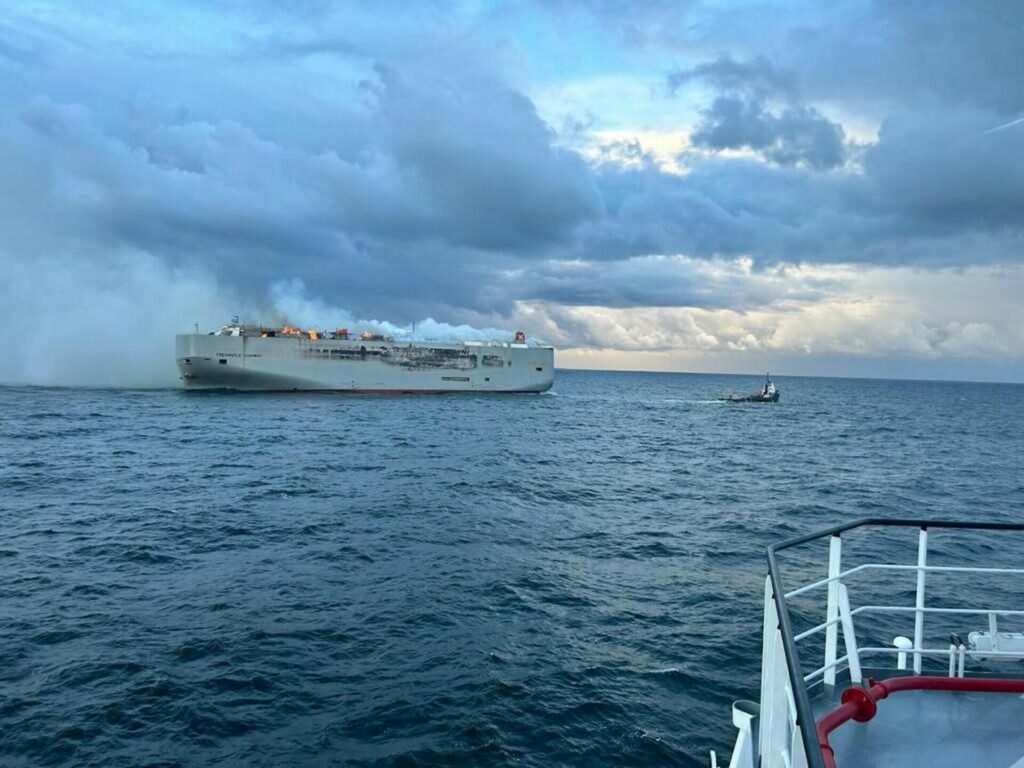While the infrastructure and products themselves continue to improve, there’s one aspect of widespread electric car adoption that has yet to be figured out: sea transport. It’s an issue troubling everyone, from insurers to emergency response officials. And for the moment, there seems to be no quick fix in sight.
The issue was brought back into sharp reality when the cargo ship Fremantle Highway caught fire off the Dutch coast carrying 498 EVs. The blaze continued for several days before it could be controlled, and the number of electric vehicles on board could have negatively impacted efforts to extinguish the fire. Reports not only suggest that the inferno originated in the battery of an electric car but that the number of EVs made it more challenging for firefighters to control.
Electric vehicle fires are no new concern, with fire crews worldwide having to update their techniques and equipment to be better prepared for a runaway lithium blaze. According to an article by the International Association of Fire and Rescue Services, it can take as much as 40,000 gallons of water to extinguish a burning Tesla.
More: Damaged Nikola Electric Truck Reignites A Month After Initial Fire
However, when it comes to transporting EVs via sea, it turns out that the industry is less prepared for the unexpected. According to a report from Reuters, the firefighting equipment installed on many ships just isn’t up to the task of an EV fire. Not only can lithium-ion battery fires burn with twice the energy of a normal fire, but they can also experience thermal runaway.
An EV fire on land is a far less complicated exercise. In the case of an isolated fire, firefighters are able to dig pits of water and dump burning cars into them. In the case of train transport, rail cars can be isolated, and on the road, trucks can pull over. But ship fires are far trickier for firefighters to access in the correct PPE and with the right equipment. The difficulty is compounded by the tightly-packed confines of most roll-on/roll-off auto carriers.
In the short term, insurance costs for automakers and vessel owners are likely to rise. In the long time, the International Maritime Organization is set to evaluate new measures for ships transporting EVs.
Some options being discussed to mitigate risk include new chemicals to douse flames, specialized EV fire blankets, battery-piercing fire hose nozzles, and proposals to segregate EVs. Until then, the risk of transporting EVs via sea will continue to trouble seafarers.








